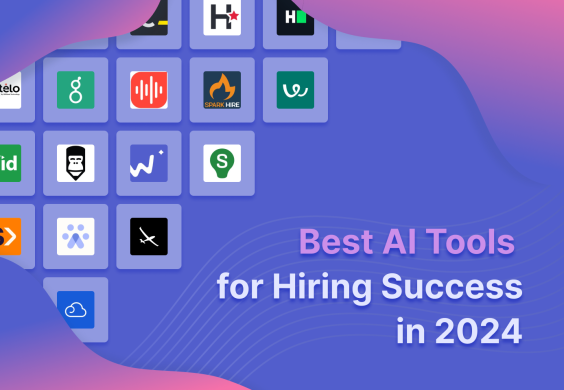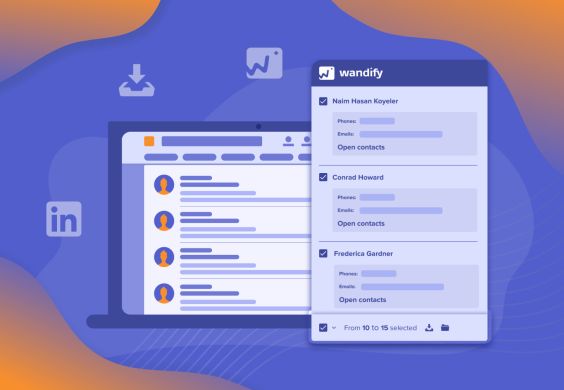Navigating the recruitment landscape requires a strategic approach. This guide is designed for recruiters, hiring managers, and anyone involved in building a seamless talent acquisition system. It offers a step-by-step approach to enhancing your recruitment process, from team assembly to successful onboarding, while also pointing out common pitfalls.
In today’s hyper-competitive recruitment market, where about 21% of UK workers are seeking new jobs, the pressure to build quality recruitment processes is intensifying:
- In Q1 2024, 84% of businesses recruited, up from 78% in previous quarters.
- 37% of companies increased their hiring at the start of the year.
- 59% of companies report intensified competition for skilled talent, facing longer hiring times and higher costs, rising salary and benefits expectations, and challenges in ensuring diversity (TotalJobs).
An effective recruitment process is essential to pinpoint the right talent and ensure a solid match in today’s competitive hiring environment. This includes leveraging the right software platforms and tools that enhance every stage of recruitment.
Building on our previous article about optimizing the recruitment process, let’s explore how the entire effective recruitment system and framework operates, and which types of solutions might be beneficial.
Utilizing the right tools and strategies can transform your recruitment process into a more effective, efficient system. This is crucial not just for attracting top talent, but also for adapting to the dynamic, ever-changing employment landscape.
Here are the core elements of an effective recruitment process framework:
1. Identifying Hiring Needs and Strategizing Your Recruitment Approach
Before filling any position, it is crucial to understand why the role is necessary and what you aim to achieve. This includes defining the required skills and attributes in potential candidates.
A common mistake at the initial stages, particularly in startups and even in well-established companies, is a lack of clarity about the exact needs the new hire will fulfil. Engage with everyone involved in the process to clearly define the role and expected outcomes.
At this initial stage, you’ll benefit from project management tools to strategize and visualize the recruitment process. Examples include Trello, ClickUp, Slack, and Google Meet. You’ll also need databases with best practices, templates, and typical skill sets to create a candidate profile and job description.
Tools like HRSG’s CompetencyCore help identify the necessary competencies and skills for specific positions.
Strategic Planning in Recruitment:
It’s vital to define recruitment objectives, key performance indicators (KPIs), develop a recruitment strategy, establish a budget and timeline, and determine the best ways to attract candidates. This strategic approach ensures you align your recruitment efforts with your business goals, ultimately leading to:
- Lower hiring costs
- Time savings
- Better quality of hires
- Improved employee productivity
However, a poor recruitment system can significantly harm your company, with a bad hire potentially costing more than $14,000, excluding the recruiting costs.
Software’s Role in Streamlining Recruitment at the Strategic Level:
This stage establishes the foundation for the entire hiring system, encompassing nearly all HRTech solutions discussed throughout this article:
- HR Analytics Software: Tools like Visier and Tableau set and track KPIs, offering robust data visualization.
- Strategic Planning Tools: Platforms such as Workday and ClearCompany ensure recruitment strategies align with business objectives.
- Budgeting Tools: Solutions like Adaptive Insights and Planful manage financial planning and monitor recruitment costs.
- Candidate Sourcing Tools: Platforms like LinkedIn Talent Solutions, Wandify, or SmartRecruiters enhance candidate engagement and streamline recruitment efforts.
- Recruitment Planning Tools: Systems such as Asana and Monday.com support detailed recruitment process planning.
- Recruitment CRM: Tools like Beamery and Bullhorn optimize candidate relationships and recruitment workflows.
2. Building Your Recruitment Team or Opting for Delegation
Assembling a skilled team is crucial for executing an effective recruitment strategy. However, sometimes delegation is the smarter choice (check the comprehensive guide on how to choose the right hiring type).
If you opt to build your own team:
- Recruit experienced recruiters and hiring managers.
- Provide ongoing training and development.
- Foster a culture of collaboration and innovation.
Software’s Role in Recruitment Team Management:
- Recruitment Tools: Platforms like LinkedIn Recruiter and Indeed help find and hire recruitment professionals.
- Training Platforms: Tools such as Udemy and LinkedIn Learning offer courses to develop recruitment and personnel management skills.
- Collaboration Tools: Slack and Miro facilitate teamwork and idea sharing within recruitment teams.
Managing a Recruitment Team:
- HR-focused Software: Platforms like BambooHR and Zoho People help manage recruitment teams and enhance their efficiency.
- Performance Management Tools: 15Five and Lattice offer feedback and performance evaluation features to boost productivity.
- Project Management Tools: Asana and Trello support recruitment projects by facilitating task management and team collaboration
3. Developing a Strong Employer Brand to Attract Top Talent
Developing a robust employer brand is crucial for attracting the best talents. A well-established positive brand simplifies the hiring process, while a lacking or negative brand perception can deter potential candidates.
Approach for Leveraging Social Media and Company Websites:
- Choose the most effective Social Media platform for your needs. Tools like Hootsuite and Buffer facilitate scheduling, publishing content, interacting with the audience, and analysing performance. Use LinkedIn for showcasing company culture, mission, values, and job postings.
- Company websites and platforms like Glassdoor and Indeed allow companies to respond to employee reviews and demonstrate company values and benefits. They also provide tools for posting job listings and promoting company culture.
Highlighting Company Culture and Values:
- Career Page Builders: Tools like SmartRecruiters and Workable help create career pages that reflect the company’s culture, values, and mission.
- Employee Advocacy Tools: Platforms like Sociabble and Bambu by Sprout Social encourage employees to promote the company brand through their personal social media.
Promoting Employee Benefits and Growth Opportunities:
- Benefits Management Software: Platforms like Zenefits and Gusto showcase the benefits available to employees and facilitate effective communication about those benefits.
- Learning and Development Platforms: Coursera for Business and LinkedIn Learning offer courses that demonstrate opportunities for professional growth.
Utilizing Other Tools to Promote Employer Brand:
- Content Creation and Management Tools: Use Canva for creating visual content like graphics and infographics that reflect the company culture. Loom can be used to produce video content that features company culture, employee interviews, and more.
- Social Media Management Tools: Tools like Sprout Social and Brandwatch help manage social media presence, plan and publish content, track brand mentions, and engage with the audience.
4. Crafting Effective Job Descriptions
Defining clear job descriptions is crucial for attracting suitable candidates and streamlining the recruitment process. Here’s how to optimize your job descriptions effectively:
- Collaborate with hiring managers to pinpoint responsibilities and required skills for each role.
- Write specific and concise descriptions that clearly communicate role expectations and attract the right candidates.
- Highlight company culture and benefits to appeal to potential candidates and emphasize opportunities for growth.
- Use inclusive language to attract a diverse applicant pool.
- Optimize for search engines and job boards with relevant keywords to increase visibility.
Software Tools: Use platforms like JDXpert and Ongig, which offer templates and guidelines for creating detailed and attractive job descriptions, ensuring consistency and accuracy across postings.
5. Developing a Talent Pipeline
Effective candidate engagement and systematizing recruitment are essential to filling the hiring funnel, serving as the fuel for your recruitment engine.
Ideally, establish your system before you begin actively recruiting. Rushing or missing deadlines typically results in poorer outcomes.
Strategies for consistently building your talent pool and sourcing qualified candidates include posting job ads, collecting applications, proactively searching for candidates, and leveraging employee referrals.
Maintain ongoing interactions with potential candidates by attending industry events and networking to build a talent pool. Utilizing professional networks can significantly enhance recruitment efforts.
How Software Can Assist:
- Applicant Tracking Systems (ATS) automate application management and candidate tracking, with tools like Greenhouse and Lever providing comprehensive solutions for attracting, selecting, and hiring candidates.
Explore popular ATS platforms here. - Job Posting Platforms like Indeed and LinkedIn help reach a wide audience and target specific candidate groups.
- Candidate Relationship Management (CRM) maintain relationships with potential candidates. Beamery, for example, helps build and sustain these relationships to attract top talent.
Job Promotion and Recruitment Marketing
Utilize job boards, social media, and employee referrals effectively. Optimizing job postings for search engines (SEO) and using recruitment software to manage postings and applications can streamline the process. Recruitment marketing platforms and programmatic job advertising further enhance visibility and applicant flow.
Consider the similarities between recruitment and marketing; they often employ the same strategies, providing a leverage point for efficiency.
6. Talent Intelligence: Implementing Effective Sourcing Strategies
Utilize Various Sourcing Methods:
- Encourage employee referrals and use internal job postings.
- Collaborate with recruitment agencies (staffing firms) when needed.
- Network at job fairs and industry events to meet potential candidates.
- Adopt Advanced Recruitment Technologies: Implement ATS and AI-powered screening tools to streamline the hiring process.
- Develop a proactive talent pipeline for future openings.
Efficient Sourcing Tools
Enhance sourcing efficiency with tools like HeroHunt.ai and Wandify, which facilitate the management and analysis of recruitment data.
Utilize data scraping tools such as Octoparse or the Instant Data Scraper browser extension to gather useful information.
Communication with Candidates
Use comprehensive automation tools like Meet Alfred to enhance sales and marketing efforts, integrating seamlessly with LinkedIn, Email, and Twitter to automate and scale outreach campaigns while maintaining a personal touch.
Leverage platforms like LinkedIn Recruiter or Snov.io for targeted search and messaging capabilities.
Manage and schedule social media outreach effectively with tools like Hootsuite.
For email campaigns, consider using GMass for its robust features tailored to candidate outreach.
7. Optimizing Candidate Screening and Evaluation Processes
Companies can enhance application, screening, and candidate selection processes by integrating advanced software solutions that streamline operations and improve decision-making.
Key Strategies for Effective Recruitment:
- Application Management: Deploy ATS to efficiently manage applications and implement automated screening tools to filter candidates accurately.
- Resume Screening: Set clear criteria based on qualifications and experience, using HR technology for initial screenings while retaining human oversight for critical decision-making.
- Interview Process: Standardize interview processes with behaviour-based questions and skills assessments. Employ video interviews and digital tools to facilitate remote interviews, ensuring a consistent and fair evaluation across all candidates.
- Advanced Interview Techniques: Train interviewers in effective techniques and use diverse frameworks to minimize bias and enhance the quality of hire. Discuss strategies to optimize the interview process, thereby reducing time-to-hire and improving candidate experience.
- Predictive Analytics and Background Checks: Integrate predictive analytics to foresee hiring outcomes and conduct thorough background and reference checks to ensure the integrity of the hiring process.
Software Solutions for This Stage:
- Interview Scheduling Tools: Tools like Calendly and GoodTime automate interview scheduling, reducing administrative load.
- Assessment and Testing Tools: Platforms like Codility, HackerRank and Berke assess technical and cognitive skills, ensuring candidates meet job requirements.
TestGorilla and Glider AI deliver customizable assessments and AI-driven matching technologies, helping companies match candidates with job requirements effectively. - Video Interview Platforms: Services such as “classic” Zoom and HireVue offer comprehensive solutions for conducting and assessing video interviews.
Spark Hire and HireVue provide AI-powered video interviewing and assessment solutions, enhancing screening processes and offering insights into candidate capabilities.
Utilizing Data-Driven Decision-Making in Recruitment
Data-Driven Recruitment Decisions:
Leverage analytics to understand trends, predict hiring needs, and evaluate recruitment channels. Utilize tools for collecting and analyzing data to inform decisions.
Continuous Recruitment Optimization:
Document all recruitment activities from advertising to candidate interactions. Adjust strategies based on effectiveness and feedback. Use recruitment software or even simple spreadsheets to track processes.
Benchmarking and Networking:
Compare your methods with competitors and engage with industry peers to adopt best practices. Keep abreast of the latest in recruitment strategies to attract and retain top talent.
Tracking and Feedback:
Monitor key metrics such as time-to-hire. Collect and use feedback from candidates and hiring managers to refine and enhance recruitment practices continuously.
Streamlining Feedback and Ensuring Well-Informed Hiring Decisions
- Collaborate with the hiring manager and other stakeholders to select the best candidate.
- Act swiftly to extend an offer, as companies that do so are more likely to secure high-quality hires.
For software solutions at this stage, utilize the same tools for candidate communication and team collaboration as previously described. This includes strategic communication, team planning, and other tools mentioned earlier for effective team collaboration.
Finalizing and Presenting Job Offers to Candidates
- Developing Attractive Compensation Packages: Create competitive salary and benefits packages using market data to ensure offers are appealing.
- Streamlining Offer Processes: Speed up the offer process to enhance efficiency. Employ tools like DocuSign and HelloSign for quick and secure electronic document signing, simplifying offer management.
- Final Decision and Offer Extension: Make a definitive decision and extend a formal job offer to the candidate, using effective offer management tools to facilitate the process.
Enhancing Candidate Experience (CX) Continuously:
Strategies for Impact:
- Analyze the role of a seamless, transparent candidate experience in boosting recruitment success.
- Utilize technology to streamline communications, schedule interviews, and provide prompt feedback.
Key Practices:
- Keep candidates informed throughout the recruitment process.
- Offer flexible and remote interview options to accommodate candidates.
The impact of specific tools on customer experience:
ATS:
- Greenhouse: Enhances transparency and communication, improving candidate interactions.
- Lever: Provides an intuitive interface and customizable communication options, enhancing candidate satisfaction.
CRM:
- Beamery: Supports ongoing engagement through automated communications and personalized campaigns.
- Avature: Maintains long-term candidate relationships, enhancing overall recruitment experience.
Scheduling Tools:
Implement tools like Calendly and GoodTime to automate interview scheduling, reducing administrative load and improving convenience for all parties.
These enhancements not only streamline HR tasks but also foster a positive, inclusive environment that significantly improves the candidate experience during the recruitment process.
Streamlining Onboarding and Retention
Building Seamless Onboarding Programs:
Develop structured programs that introduce new hires to the company culture and provide ongoing support to ensure smooth transitions.
Onboarding Technology Enhancements:
- BambooHR simplifies the integration of new employees.
- Sapling accelerates adaptation with an efficient onboarding platform.
Leveraging Tech for Support and Documentation:
Use AI models and chatbots for efficient onboarding and internal documentation with tools like Notion and Guru.
Feedback Tools:
- Survale and Culture Amp gather valuable insights through candidate feedback, improving processes and candidate experiences.
This approach integrates onboarding with recruitment, enhancing employee engagement and retention from the start.
Additional Key Elements of an Effective Recruitment Process
Integrating and Automating Recruitment Processes from Start to Finish
Technology extends beyond recruitment, encompassing the entire employee lifecycle to truly revolutionize your strategy. Besides Applicant Tracking Systems (ATS), integrating Talent Management Systems, Learning Management Systems, and Human Resource Management Systems ensures a seamless employee experience from onboarding through career development.
However, using disparate systems for each function can lead to fragmented data storage, burdening HR departments. Therefore, implementing end-to-end system integration or a centralized data repository is crucial.
Examples of Integrated Tools:
- Wandify offers a turbocharged search engine with advanced synonym and variation searches, global cross-channel contact search, data enrichment, and quick access to direct contact details. It also features enhanced system functionalities like folders, lists, clustering, sorting, advanced filters, ranking, commenting, tagging, reasonable pricing, and flexible export options.
- HireEz integrates sourcing, CRM, analytics, and automation.
- Jobin.cloud features LinkedIn Automation, an integrated ATS, Contact and People Finder, and ChatGPT Integration.
- Zapier automates workflows across apps to enhance recruitment tool integration.
- Tools like Magical facilitate smooth task automation, streamlining recruiters’ workflows.
Incorporating Diversity and Inclusion
Emphasize the importance of diversity in recruitment to foster an inclusive workplace and provide guidelines for implementing unbiased recruitment practices with tools that promote diversity.
Modern software solutions attempt to mitigate bias with features like blind recruitment decisions. While AI aims to combat bias, it often trains on biased datasets, necessitating continuous adjustments and “antibias pills” to refine its effectiveness.
Legal Compliance and Ethical Considerations:
Discuss the significance of adhering to legal standards and ethical practices in recruitment. Explore how technology can ensure compliance with employment laws and regulations, such as Equal Employment Opportunity (EEO) laws, anti-discrimination and diversity initiatives, and data privacy and security regulations.
More on Effective Software Tools and Platforms for Optimizing the Recruitment Process
- Top 5 Best Tools for Recruitment and Talent Acquisition in 2024
- The Ultimate Guide to Choosing Best Candidate Sourcing Tool for Recruiters
- Boost Recruitment Efficiency: Export LinkedIn Candidate Details Instantly with Wandify
- LinkedIn X-Ray is Doomed: How to Rebalance Candidate Search
Conclusion
Building an effective recruitment process requires balancing human insight with technological advancements. By leveraging HRTech tools, organizations can streamline their hiring processes and enhance candidate experience. Continuously evaluating and adapting to changing workforce dynamics ensures that companies attract, identify, and retain top talent. This holistic approach ultimately leads to more efficient and successful hiring outcomes.


